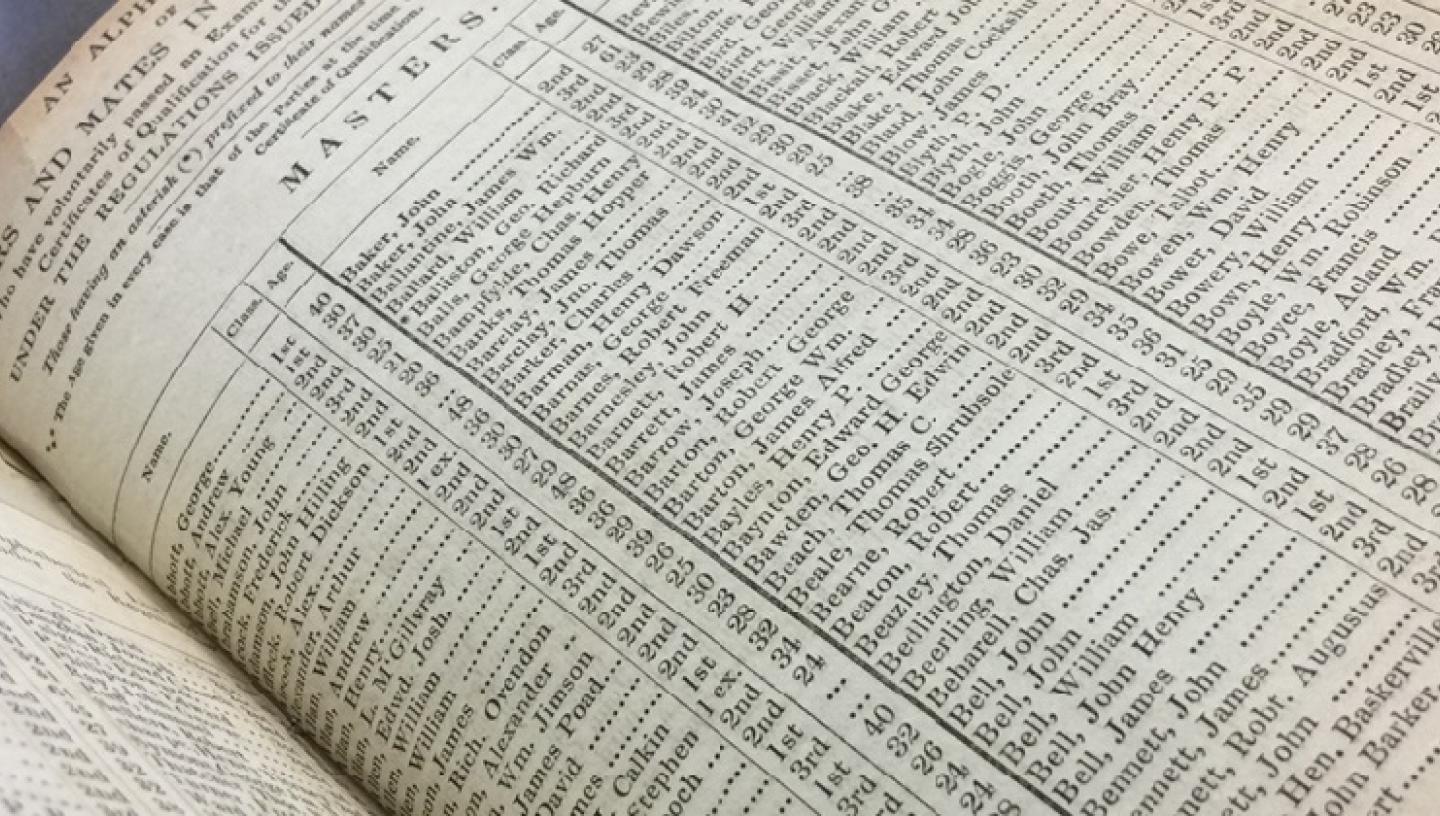
25 Jul 2017
The Caird Library’s collection of masters’ and mates’ certificates dating from 1850 -1927 (also available via Ancestry.com) is probably the most well-known example of evidence showing the capabilities of the those in charge of merchant vessels but what happened before 1850?
From 1845 - 1850 a voluntary precursor of the certification of masters and mates was in place.
A Board of Trade publication from 1847 entitled A practical digest of the law of merchant ships and seamen, and commercial navigation in so far as regulated by statute (RMG item ID: PBB5931) laments the previous unregulated age:
"Hitherto there has existed in this country no public regulation as to the skills of persons employed as masters of merchant ships. Their owners have been left to their own discretion in this respect, on the assumption that their interest in the due navigation of their vessels would make them sufficiently careful in the appointment of competent persons.
It is, however, a notorious not-withstanding considerable improvement in the qualification of masters generally, that many lives and much valuable property are every year sacrificed from the incompetence and negligence of those employed in this character."
The publication continues on to describe some of the practicalities of the examinations, which were awarded in four classes: third, second, first and Class 1 Extra.
Those wishing to qualify as a master needed to be aged 21 and over and have no less than six years at sea. To qualify as a mate, you needed to be over 19 years of age with four years experience at sea.
All candidates needed to provide evidence of their “sobriety of character”, their literacy, numeracy and to demonstrate their understanding of seamanship, for example rigging, stowing holds and use of the quadrant or sextant.
To progress to a second class certificate, the candidate needed to demonstrate more advanced navigational skills, such as determining latitude by observation of the sun and moon. For a first class certificate a greater understanding of nautical astronomy and handling emergencies, such as rigging jury masts or building rafts, was required.
Records of these early certificates awarded under the voluntary scheme (although not the certificates themselves) are held by the UK National Archives in the series BT143.
Details of certificates awarded are also listed in an appendix of Lloyd’s Register of Shipping between 1846 - 1852. Whilst better known as a list of vessels, the Register can also be used for researching individuals passing the voluntary examinations at this time. Copies can be consulted in the Caird Library.
Gareth Bellis, Archive and Library Manager